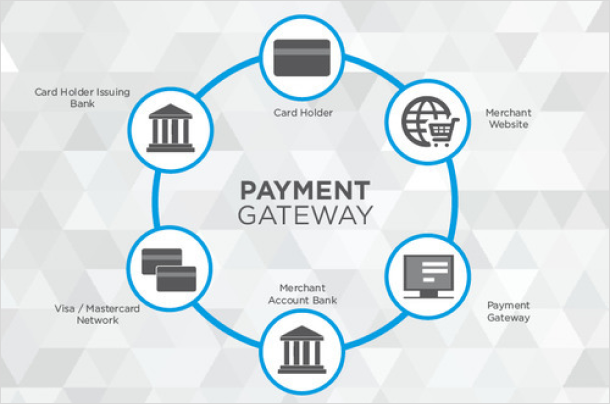AUTHOR : SOFI PARK
DATE : 4/11/2023
Payment Gateway Steps: A Comprehensive Guide
Payment gateways are the backbone of any e-commerce business[1], enabling secure and efficient online transactions. Choosing the right payment gateway is crucial for the success of your online store. In this article, we will walk you through the essential steps to select the perfect payment gateway for your business.
Introduction to Payment Gateways
Payment gateways are online services that facilitate transactions[2] between customers and businesses[3]. They securely process credit card and other payment information, ensuring that the money moves from the customer’s account to the merchant’s account[4]. Without a reliable payment gateway, your e-commerce business would struggle to accept payments and thrive.
Importance of Choosing the Right Payment Gateway
Selecting the right payment gateway can significantly impact your online business[5]. It influences customer trust, conversion rates, and the overall user experience. Making an informed choice can lead to higher sales and customer satisfaction, while a poor choice can lead to abandoned carts and lost revenue.
Step 1: Research and Identify Your Payment Gateway Needs
The first step in selecting a payment gateway is to understand your business’s unique requirements. Do you need international payment support? Are you dealing with high-risk transactions? Carefully identifying your needs will help you find a payment gateway that aligns with your business goals.
Step 2: Compare Different Payment Gateway Providers
Next, research and compare different payment gateway providers. There are numerous options available, each with its features, strengths, and weaknesses. Take the time to evaluate and shortlist potential candidates.
Step 3: Consider Security and Fraud Prevention
Security is paramount in e-commerce. Look for a payment gateway that offers robust security measures, including encryption and fraud prevention tools. Ensuring the safeguarding of your customers’ sensitive data should unquestionably take precedence.
Step 4: Evaluate User Experience
A smooth checkout process is essential for customer satisfaction. Evaluate the user experience provided by each payment gateway. Check for features like one-click payments[1], mobile responsiveness, and seamless integration into your website.
Step 5: Pricing and Transaction Fees
Understanding the cost structure is crucial. Compare transaction fees, setup costs, and ongoing fees for each payment gateway. Make sure the pricing aligns with your budget and expected transaction volume.
Step 6: Integration with Your E-commerce Platform
Ensure that the payment gateway you choose seamlessly integrates with your e-commerce platform[2]. Compatibility issues can lead to technical challenges and negatively impact your business.
Step 7: Payment Gateway Compatibility with Different Payment Methods
Consider the types of payment methods your customers prefer. Your chosen payment gateway should support a variety of options, such as credit cards, digital wallets[3], and bank transfers.
Step 8: Customer Support and Reliability
Customer support is vital when technical issues arise. Opt for a payment gateway provider[4] with responsive customer support and a track record of reliability.
Step 9: Payment Gateway Testing
Before making a final decision, test the payment gateway thoroughly. Make small transactions[5] to ensure everything functions as expected.
Step 10: Implementing the Chosen Payment Gateway
Once you’ve chosen the right payment gateway, follow the provider’s guidelines to implement it into your online store. Ensure that it’s correctly configured and integrated.
Step 11: Monitor and Optimize Payment Gateway Performance
Continuously monitor the performance of your payment gateway. Identify and address any issues promptly, and look for opportunities to optimize the checkout process.
Common Challenges and Solutions
While payment gateways are essential, they can also present challenges such as transaction failures, chargebacks, or integration problems. Familiarize yourself with these challenges and be prepared to address them proactively.
Conclusion
selecting the right payment gateway is a critical decision for your e-commerce business. By following the steps outlined in this article, you can make an informed choice that aligns with your business goals and ensures a smooth, secure, and user-friendly payment process.
FAQs
1. Can I change my payment gateway after implementing it?
Yes, it’s possible to switch payment gateways, but it can be a complex process. Carefully plan the transition to minimize disruptions.
2. What is the average transaction fee for payment gateways?
Transaction fees vary, but they usually range from 1% to 3% of the transaction amount, plus a fixed fee per transaction.
3. How do I handle international payments with a payment gateway?
Ensure that your chosen payment gateway supports international payments and multiple currencies to cater to a global audience.
4. Is it necessary to have a payment gateway for a small e-commerce store?
While it’s not mandatory, having a payment gateway improves your customers’ experience and can lead to increased sales.
5. What is PCI compliance, and why is it important for payment gateways?
PCI compliance ensures that your payment gateway follows strict security standards to protect sensitive customer data. It’s essential for safeguarding customer information and maintaining trust.





